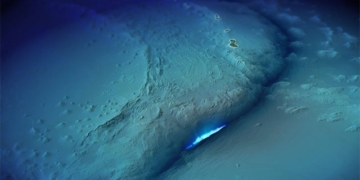A study published on January 17 in the scientific journal Nature has revealed intriguing findings about the history of the formation of the oldest black hole in the universe.

Illustration released by NASA on February 21, 2013, showing a supermassive black hole in the spiral galaxy NGC 1365. (Illustration: AP)
Previously, based on images observed from the James Webb Telescope, scientists estimated that this black hole has a mass 1.6 million times that of the Sun. It resides at the center of the ancient galaxy GN-z11 and was formed just 430 million years after the Big Bang created the universe, meaning it has existed for over 200 million years longer than any black hole previously observed. This black hole also shares characteristics with other black holes, being invisible and only detected through massive bursts of light when the black hole “devours” surrounding matter.
Interestingly, this black hole contradicts previous conventional findings, as researchers had believed that supermassive black holes at the centers of galaxies took hundreds of millions, if not billions, of years to form. However, co-author of the study, astrophysicist Stephane Charlot from the Paris Institute of Astrophysics in France, suggests that black holes in the early universe may form differently from those closer to us.
One hypothesis proposes that the birth of the black hole at the center of galaxy GN-z11 results from the explosive deaths of numerous massive stars that only existed in the early universe or the direct collapse of a dense gas cloud that had not yet reached the star formation stage. Once formed, the black hole would continue to absorb the abundant surrounding gas to grow further.
Jan Scholtz, an astronomer at the University of Cambridge and co-author of the study, hopes that the James Webb Telescope, along with other instruments such as the Euclid telescope from the European Space Agency (ESA), will discover many similar black holes.


















































